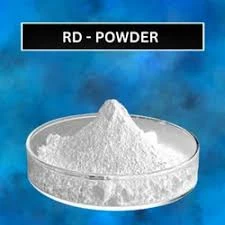
sept. . 22, 2024 12:22 Back to list
redispersible polymer powder manufacturing process
Redispersible Polymer Powder Manufacturing Process
Redispersible polymer powders (RDPs) play a crucial role in various industries, particularly in construction and adhesives. These fine powders are derived from emulsions and possess the ability to re-disperse in water, forming a stable polymer film upon drying. The manufacturing process of RDPs involves several critical steps, each designed to ensure high-quality products that meet industry standards.
The first step in the manufacturing process is the production of the polymer emulsion. This typically involves the polymerization of monomers in an aqueous medium, leading to the formation of a stable latex. Common monomers used in the production of emulsions include vinyl acetate, ethylene, and acrylates, which, when polymerized, create a variety of copolymer compositions tailored for specific applications. The choice of monomers influences the properties of the resulting RDP, such as adhesion, flexibility, and water resistance.
Once the emulsion is prepared, it is essential to remove excess water from the system to produce a powder form. This is typically achieved through a drying process, which can involve spray drying or freeze-drying. Spray drying is the more common method, where the liquid emulsion is atomized into small droplets and then rapidly dried in a hot air stream. This method ensures quick solvent removal and helps in maintaining the integrity of the polymer structure, resulting in free-flowing powders. Freeze-drying, on the other hand, involves freezing the emulsion and then subjecting it to a vacuum that allows for sublimation of water. While this method preserves sensitive polymers better, it is usually more expensive and less scalable than spray drying.
redispersible polymer powder manufacturing process

Following the drying process, the resulting polymer powder must undergo a rigorous cooling and milling stage. This step breaks down any agglomerated particles, ensuring the final product has a uniform particle size distribution. The milling process can impact the re-dispersibility of the powder, which is a crucial characteristic for its end-use applications. Proper particle size and distribution facilitate better handling and mixing with other materials like cement, gypsum, or fillers in various formulations.
After milling, quality control is an essential phase of RDP manufacturing. The powders are subjected to several tests to evaluate their properties, including particle size analysis, moisture content, and re-dispersibility tests. This ensures that the product meets established specifications and performs well in practical applications. Some manufacturers also conduct additional tests for specific applications, assessing parameters such as adhesion strength, flexibility, and film formation characteristics.
Finally, the packaged redispersible polymer powder is ready for distribution. It is typically stored in moisture-proof packaging to maintain its properties until it reaches the consumer. RDPs find applications in diverse products such as tile adhesives, construction mortars, and paints; thus, their manufacturing process is crucial for the overall quality of these materials.
In conclusion, the manufacturing of redispersible polymer powders is a sophisticated process involving emulsion polymerization, drying, milling, and rigorous quality control. Each stage is vital to ensuring that the final product meets the high standards required for various applications, playing an essential role in enhancing the performance and longevity of construction materials and adhesives. With advancements in technology, the efficiency and effectiveness of RDP manufacturing continue to improve, meeting the ever-evolving demands of the industry.
-
Unlocking the Benefits of HPMC Products: A Gateway to Versatile Applications
NewsAug.07,2025
-
Unleashing the Potential of HPMC Ashland: A Comprehensive Look
NewsAug.07,2025
-
Tile Bonding Cellulose: The Key to Superior Adhesion and Durability
NewsAug.07,2025
-
Hydroxypropyl Methylcellulose Powder: The Versatile Component in Modern Pharmaceuticals
NewsAug.07,2025
-
Hydroxyethyl Cellulose: The Versatile Solution for Various Industries
NewsAug.07,2025
-
Hydroxyethyl Cellulose (HEC): The Versatile Polymer for Various Applications
NewsAug.07,2025







